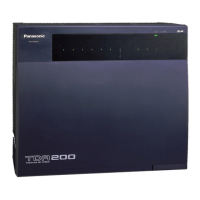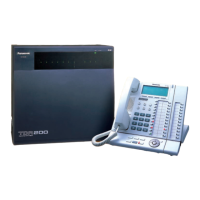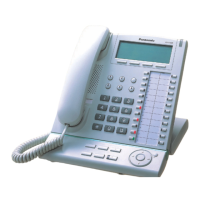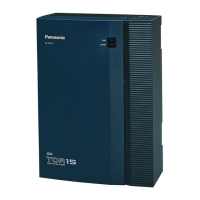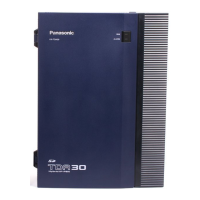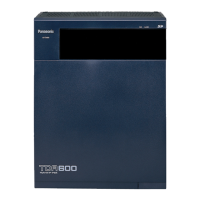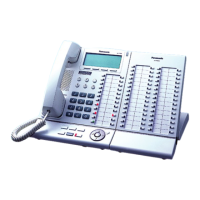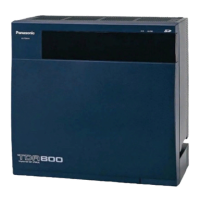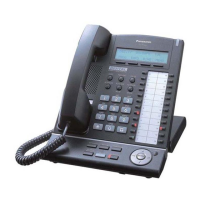2. TIE-to-Trunk Access
3. Trunk-to-TIE-to-Trunk Access
Trunk-to-TIE Access
It is possible to assign an extension of another PBX as the destination of incoming trunk calls to the own
PBX.
It is also possible to forward calls using a virtual PS. Using this method, trunk calls received at PBX-1 are
forwarded directly to the extension at PBX-2, even when using the PBX Code method.
a. Incoming Trunk Call Destination Assignment
[Example]
PBX-1
TIE Line Network
TIE Line
PBX-2
Extn. 2011
Outside Caller
Trunk
Trunk
Interface
Dials "123-4567".
Telephone Company
Destination: 2011
DID No: 4567
Interface
Extn. 1011
Explanation:
An outside caller dials "123-4567". The call is sent to extension "2011" of PBX-2 through the TIE line
according to the assignment of the DID call destination of PBX-1. (® 1.1.1.3 Direct Inward Dialling
(DID)/Direct Dialling In (DDI))
® 12.3 [10-3] DDI / DID Table—
DDI / DID Destination—Day, Lunch, Break, Night
® [453] DID Destination
b. FWD/Call Transfer/Intercept Routing to the TIE Line
Feature Guide 313
1.30.1 TIE Line Service

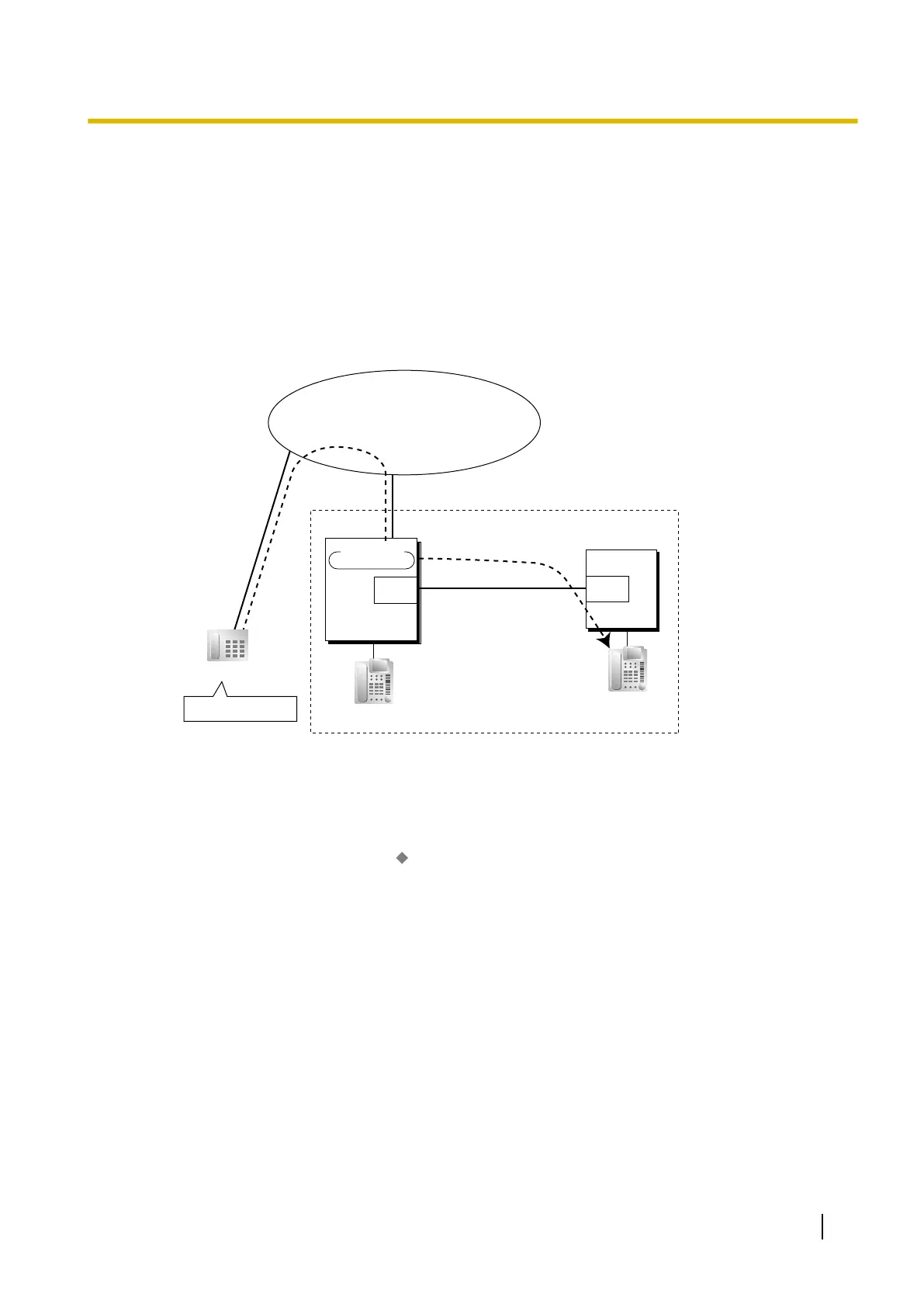